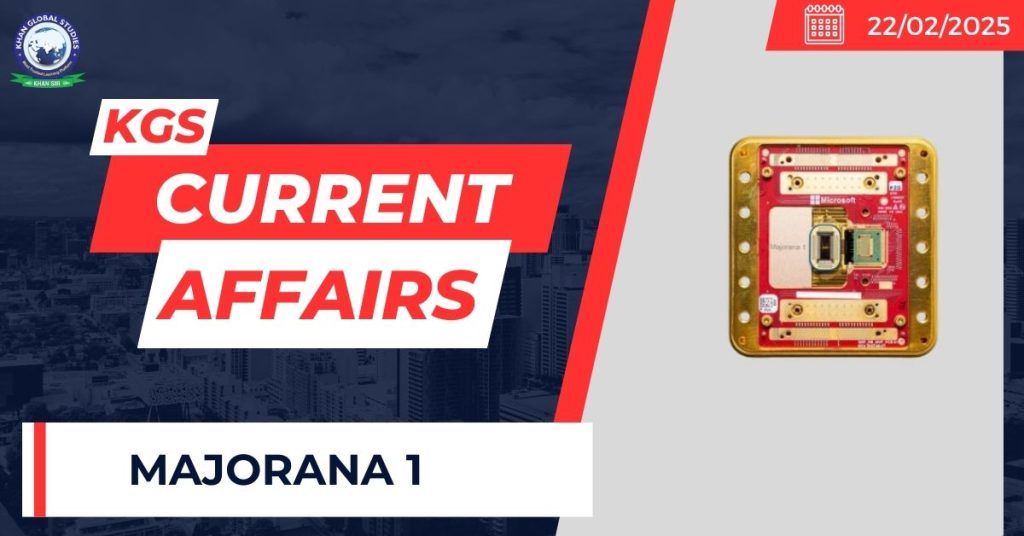Recently, Microsoft announced the arrival of Majorana 1, a new chip that produces more reliable and scalable qubits than its predecessors.
About Majorana 1

- It is the world’s first quantum chip using Topological Core architecture.
- It introduces topoconductors, materials that can observe and control Majorana particles for stable, error-resistant quantum operations.
- Topoconductors are made by combining indium arsenide (a semiconductor) and aluminum (a superconductor).
- When cooled to near absolute zero and tuned with magnetic fields, the semiconductor is married with superconductivity.
- It contains eight “qubits,” or quantum bits (fundamental unit of information in quantum computing), with the potential to scale to 1 million qubits
- This advancement is compared to the invention of semiconductors, which enabled modern electronics.
- Microsoft’s goal is to build quantum computers with a million qubits, needed to tackle real-world industrial and scientific problems.
- Microsoft’s approach is likened to inventing the “transistor for the quantum age.”
- The unique combination of materials and details in their new stack has enabled the development of a new kind of qubit and architecture.
- Other Quantum Computing Chips: Willow chip by Google and Quantum Heron by IBM
Key Features of Majorana 1 Quantum Chip
- A revolutionary new design for quantum computing that leverages topoconductors to control and observe Majorana particles.
- It reduces the need for extensive error correction compared to other quantum computing approaches.
- It can scale to millions of qubits, a crucial step for solving industrial-scale problems.
- It simplifies the quantum computing process and makes it easier to build scalable quantum systems.
- Its scalable qubits offer a clear path for solving real-world problems, such as developing self-healing materials or creating efficient catalysts to break down pollutants.
- It allows users to design materials and molecules efficiently, leveraging quantum computing’s precision to bypass years of trial-and-error.

